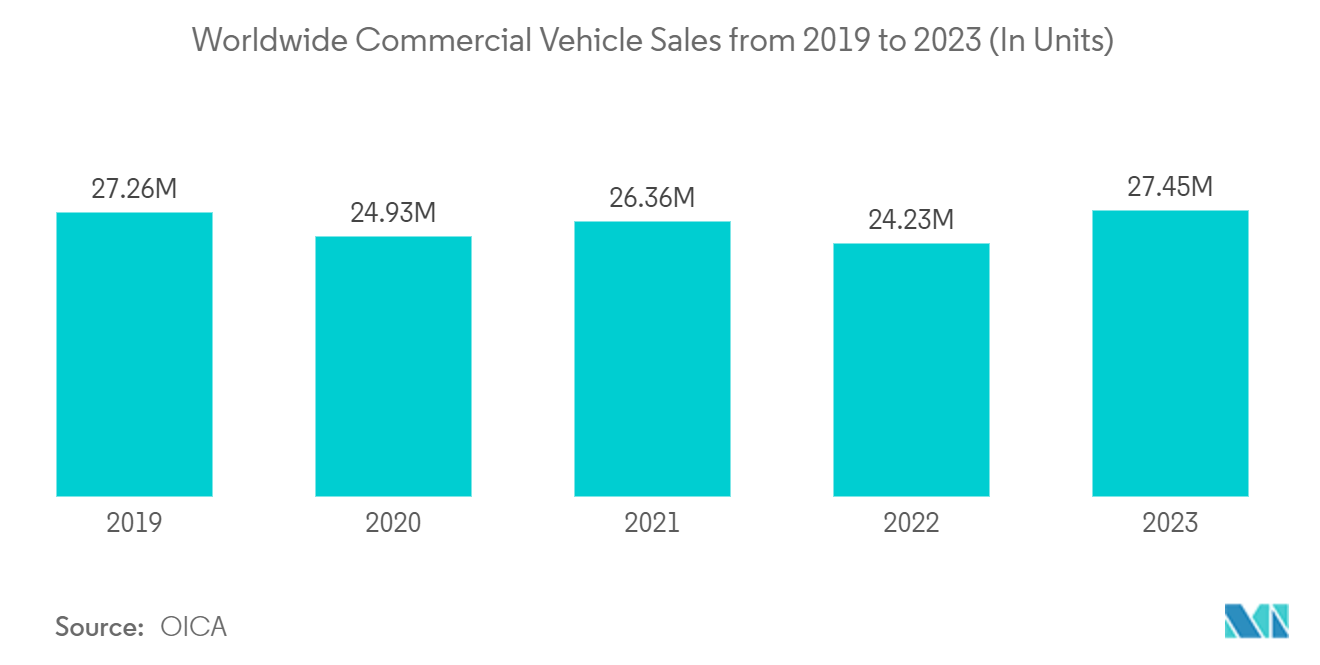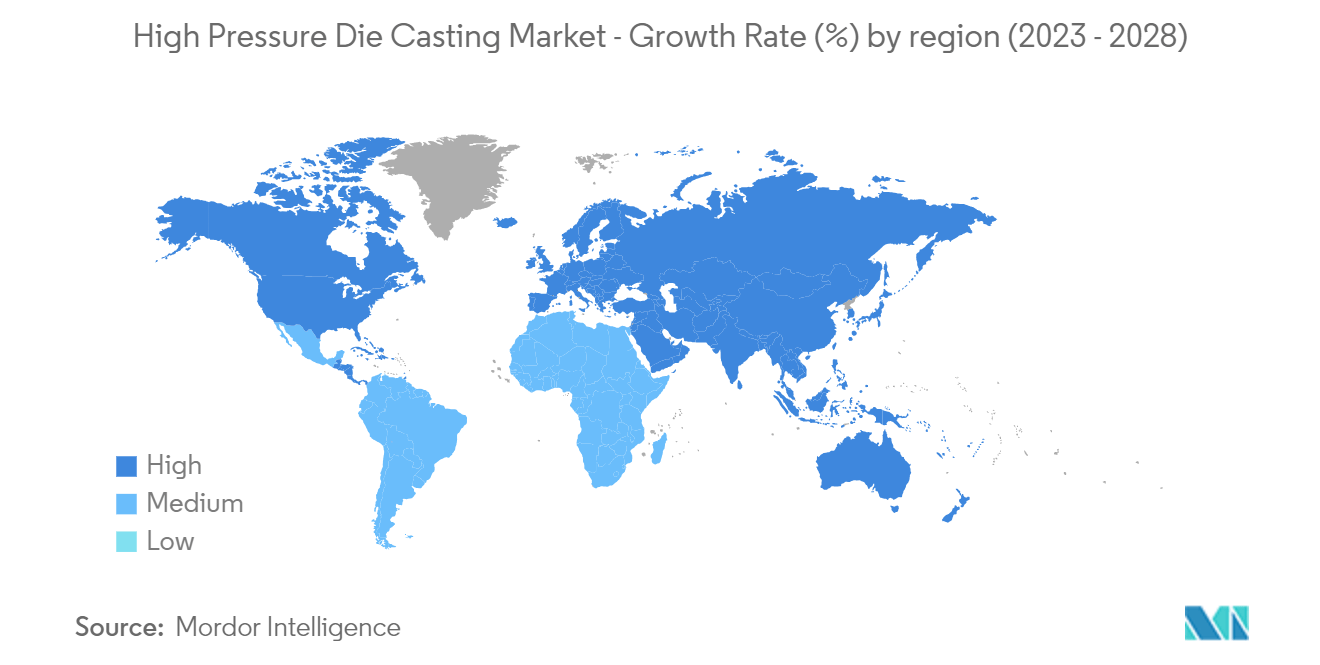Market Trends of High-Pressure Die Casting Industry
Automotive Segment Expected to Gain Prominence During the Forecast Period
The automotive industry is the predominant segment within the high-pressure die casting (HPDC) market, primarily driven by the surge in aluminum usage and the escalating production of EVs. The shift toward lightweight materials is a critical driver in the automotive industry, primarily due to the need to meet stricter fuel economy and emissions standards.
- The aluminum content in vehicles, which currently averages about 450 pounds per vehicle, is projected to increase to 550 pounds per vehicle by 2030. This reflects a nearly 22% rise, underscoring the industry’s ongoing shift toward lighter and more fuel-efficient vehicles.
This trend is particularly pronounced in the production of electric vehicles, which are more aluminum-intensive than traditional combustion engine vehicles. The increased aluminum usage in vehicles aligns with the automotive industry's needs for HPDC as it allows for the efficient and sustainable production of complex, high-integrity parts. Furthermore, the surge in EV production further underscores the importance of HPDC in the automotive industry.
- According to the International Energy Agency (IEA), EV sales are projected to rise significantly from 14 million units in 2023 to nearly 45 million by 2030 and continue to rise to reach 65 million by 2035. This growth is mirrored in the sales share, which is expected to jump from 15% in 2023 to about 40% by 2030 and over 50% by 2035 in the Stated Policies Scenario.
This increase in EV production necessitates more HPDC parts, particularly because of the need for lightweight structural components that accommodate the additional weight of batteries without compromising vehicle performance.

Asia-Pacific Expected to Witness the Highest Growth During the Forecast Period
The Asia-Pacific region is expected to dominate the global high-pressure die-casting market, and it is also expected to witness the fastest growth rate during the forecast period. In the Asia-Pacific region, countries like China, India, and Japan are likely to play a key role in the market.
- For instance, China is one of the major producers of die-casting parts and accounts for the majority of the regional die-casting market’s share. The metal casting industry in China has more than 30,000 facilities, of which around 8,000 facilities produce non-ferrous castings. China produces over 55.0 million metric tons of castings.
The increasing popularity of fuel-efficient vehicles and the latest advancements in die-casting techniques are expected to further contribute to the market's development. Thus, due to such benefits, automakers in the region are entering long-term deals for uninterrupted supply of raw materials, expansion of plants, etc.
The growing focus of foundries on improving innovation to produce products that meet consumer preferences and international standards offers new opportunities for players in the market. Foundries are focusing on technical quality and brand orientation, which are considered major growth drivers for the Asia-Pacific high-pressure die-casting market. Such developments and instances are likely to contribute to the overall development of the market across Asia-Pacific countries.


